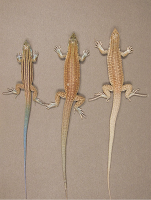A new paper in PLoS ONE reports that spinycheek crayfish (Orconectes limosus) can reproduce by parthenogenesis. Unlike a previous report of red swamp crayfish (Procambarus clarkii) reproducing by parthenogenesis, which based its claim on similar DNA from adults and no actual observed instances of reproduction, this paper claims to have isolated females that have reproduced.
The animals were taken from the wild and reared as adults, which immediately makes one think “sperm storage.” The authors argue that the genetic similarity of the offspring rules this out. I think an obvious next step is to see if juveniles born in the lab without sex can be reared through an entire generation, and in turn produce more offspring without meeting males.
 This is a bombshell. It suggests that asexual reproduction in crayfish is more common than thought, particularly when the P. clarkii paper is also hinting that they can do the same. From an evolutionary point of view, this would mean that the evolution of the completely asexual lineage of Marmorkrebs may not have been as insurmountable as it first appeared.
This is a bombshell. It suggests that asexual reproduction in crayfish is more common than thought, particularly when the P. clarkii paper is also hinting that they can do the same. From an evolutionary point of view, this would mean that the evolution of the completely asexual lineage of Marmorkrebs may not have been as insurmountable as it first appeared.Reference
Buřič M, Hulák M, Kouba A, Petrusek A, Kozák P. 2011. A successful crayfish invader is capable of facultative parthenogenesis: a novel reproductive mode in decapod crustaceans. PLoS ONE 6(5): e20281. http://dx.doi.org/10.1371%2Fjournal.pone.0020281
Picture from here.












